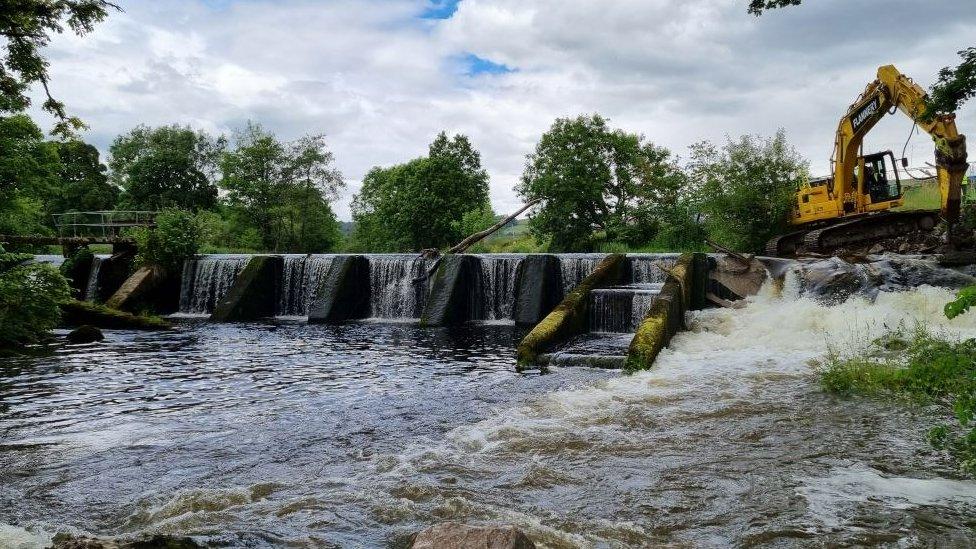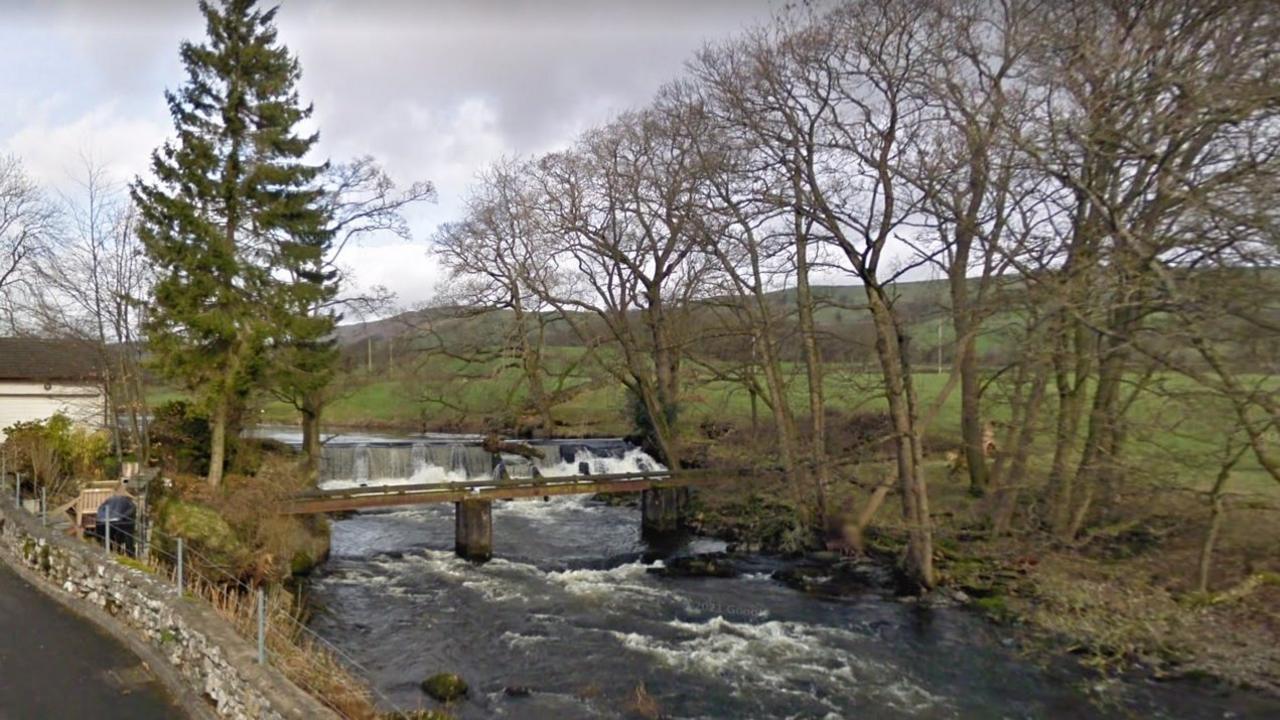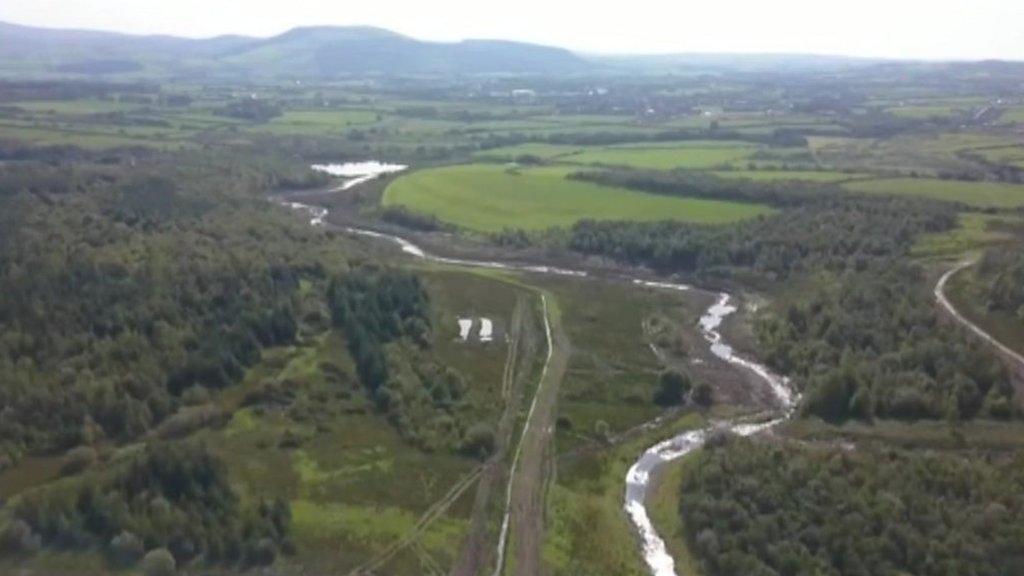Work to dismantle 19th Century Kendal weir begins
- Published

The River Kent is home to white-clawed crayfish and freshwater pearl mussels
Work to remove a 19th Century barrier in the Lake District has begun as part of a plan to re-naturalise a section of the River Kent.
Over the next three months a dam and two fish passes will be taken away at Bowston Weir, near Kendal, the South Cumbria Rivers Trust said.
The move has been criticised, with one objector comparing the sound of waterflow to "Beethoven in the wild".
However, the rivers trust said the work was needed to boost fish stocks.
A series of rocks held down with pins, known as a rock ramp, will replace it to help cut down on the build-up of sediment.
Pete Evoy, director of the rivers trust, said: "Removing Bowston Weir will help re-naturalise this section of the River Kent, improve navigation for migratory species.
"We expect to see more fish, eels, invertebrates and other species."
'Industrial past'
The weir was built in 1874 to control the waterflow that powered Bowston Mill, which made rags and rope for the paper industry.
The mill closed in the 1960s and was demolished but the weir was left in place.
The river trust added: "We appreciate that the weir is a part of Cumbria's industrial past and the only remaining element of what would have been the wider local mill power infrastructure.
"The mill was dismantled many years ago and the weir has not since served its original purpose."

Follow BBC North East & Cumbria on Twitter, external, Facebook, external and Instagram, external. Send your story ideas to northeastandcumbria@bbc.co.uk, external.
Related topics
- Published3 March 2022

- Published16 September 2020
